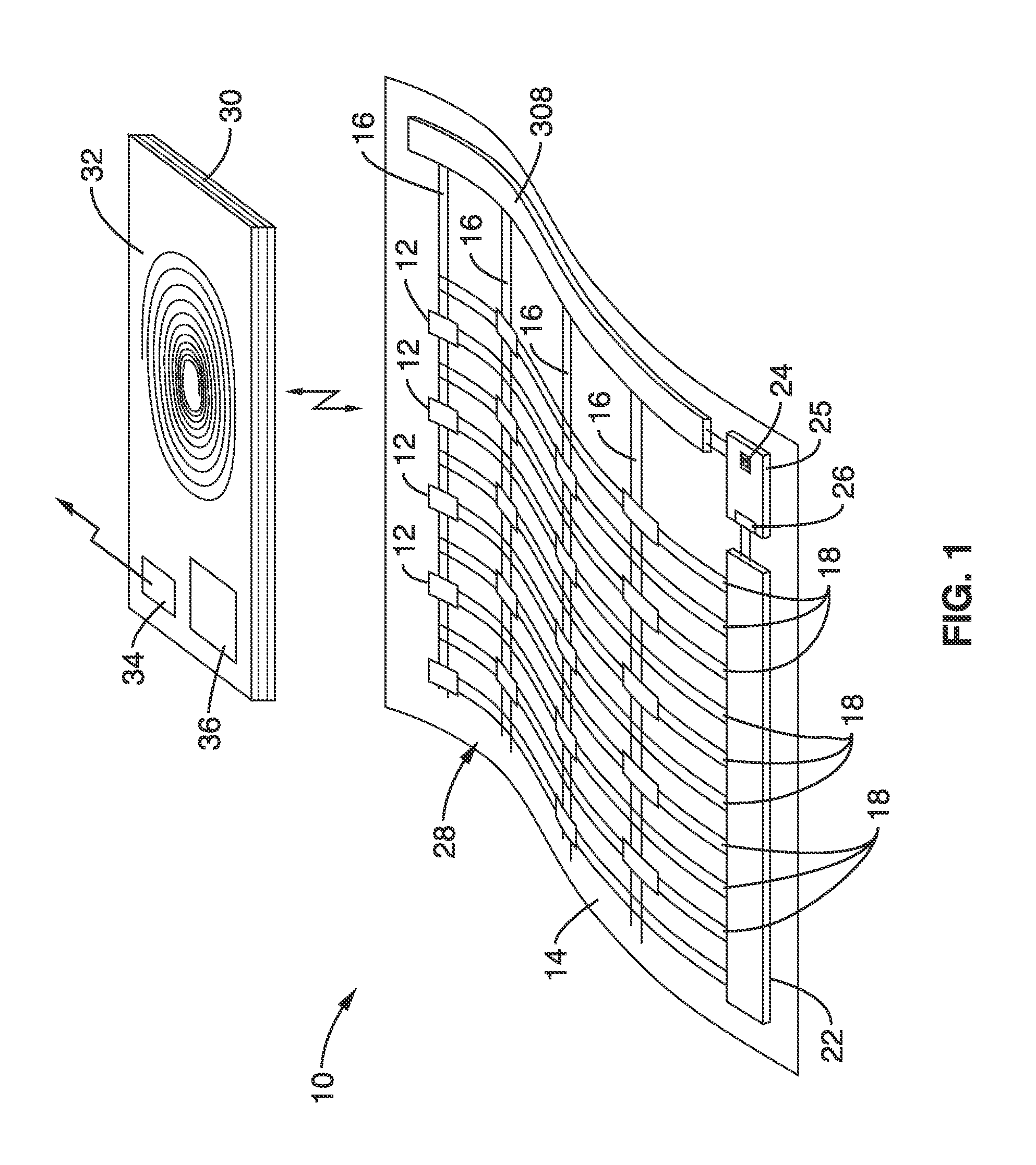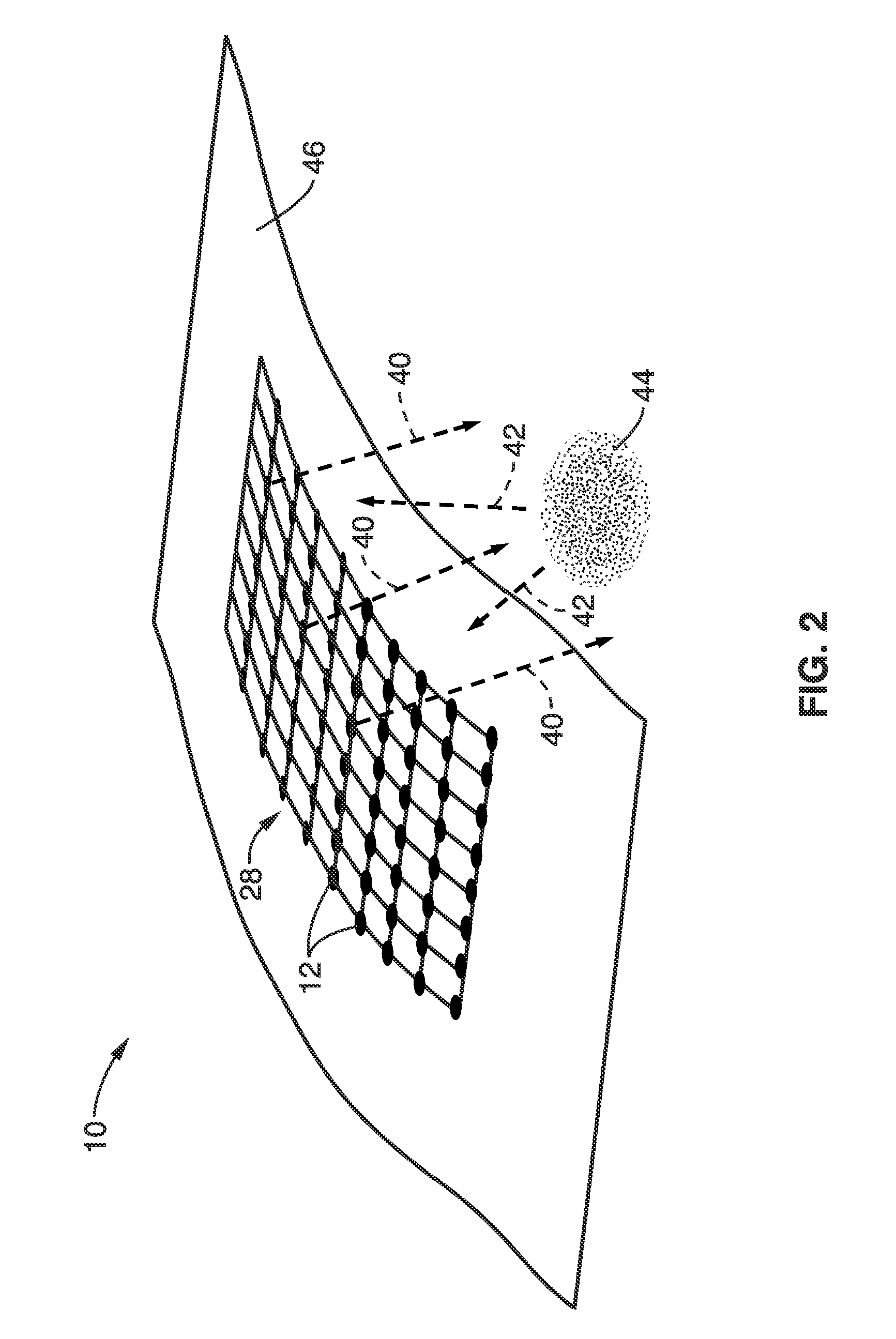Distributed external and internal wireless sensor systems for characterization of surface and subsurface biomedical structure and condition
a biomedical structure and condition technology, applied in the field of sensing systems, can solve the problems of local remodeling and resorption that affect the geometry and mechanical properties of the bone, increase the risk of wear or fracture, and increase the risk of structural variations
- Summary
- Abstract
- Description
- Claims
- Application Information
AI Technical Summary
Benefits of technology
Problems solved by technology
Method used
Image
Examples
embodiment 1
[0177]2. The system of wherein the electromagnetic energy comprises RF energy; wherein the sensor elements comprise a plurality of sensor or emitter electrodes; and wherein the antenna comprises an RF coil configured to inductively power at least one of the electrodes.
[0178]3. The system of embodiment 1: wherein the electromagnetic energy comprises the sole source of power to the array.
[0179]4. The system of embodiment 1, wherein the electromagnetic waveform comprises a data signal; and wherein the data signal comprises instructions readable by said processor for controlling the one or more elements.
[0180]5. The system of embodiment 1: wherein the electromagnetic energy comprises an optical waveform; wherein the sensor elements comprise a plurality of optical sensors or emitters; and wherein the antenna comprises an optical receiver configured to inductively power at least one of the optical sensors or emitters.
[0181]6. The system of embodiment 1: wherein the electromagnetic energy...
embodiment 4
[0183]8. The system of embodiment 4, wherein the array further comprises a signal demodulator to demodulate the electromagnetic signal for processing by the processor.
embodiment 8
[0184]9. The system of embodiment 8, wherein the array further comprises a signal modulator for transmitting a return data signal relating to said physiological characteristic from the array to the interrogator.
[0185]10. The system of embodiment 1, wherein the sensor elements are disposed at intersections of row and column transmission lines; and wherein said transmission lines are coupled to said processor for individual control of the sensor elements.
[0186]11. The system of embodiment 1, wherein the array is configured to comprise at least one emitter element configured to emit a signal into the internal tissue region and at least on sensor element configured to receive a reflected signal from said tissue region; wherein the reflected signal comprises at least one physiological characteristic of said tissue region.
[0187]12. The system of embodiment 1, wherein the sensor array comprises a first sensor array, the system further comprising: a second array of sensor elements; the seco...
PUM
 Login to View More
Login to View More Abstract
Description
Claims
Application Information
 Login to View More
Login to View More - R&D
- Intellectual Property
- Life Sciences
- Materials
- Tech Scout
- Unparalleled Data Quality
- Higher Quality Content
- 60% Fewer Hallucinations
Browse by: Latest US Patents, China's latest patents, Technical Efficacy Thesaurus, Application Domain, Technology Topic, Popular Technical Reports.
© 2025 PatSnap. All rights reserved.Legal|Privacy policy|Modern Slavery Act Transparency Statement|Sitemap|About US| Contact US: help@patsnap.com



